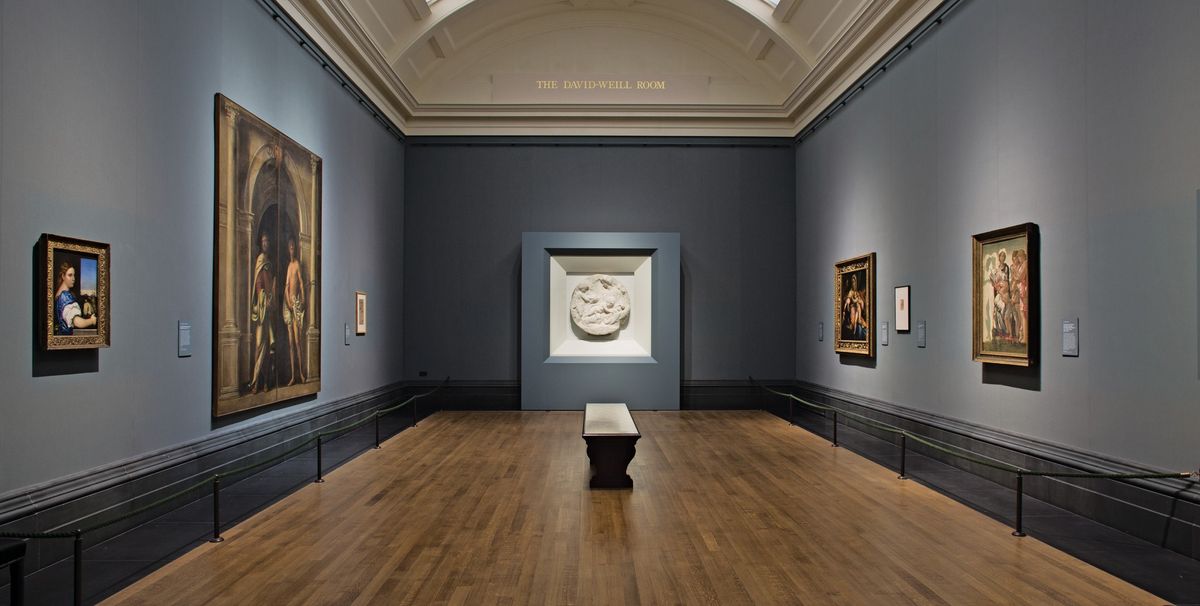The Royal Academy’s Michelangelo sculpture, one of the UK’s greatest art treasures, is to remain on loan to the National Gallery until the end of the year. The Taddei Tondo, named after the Florentine owner who commissioned it, had been expected to return to the Royal Academy after the National Gallery’s current Michelangelo & Sebastiano exhibition closes on 25 June, but the tondo is now scheduled to return home after the completion of the current building work at the academy. (This is only the second time since 1830 that the Michelangelo has been lent.)
For the past 26 years, the tondo, which depicts the Virgin, the Christ Child and Saint John, has been displayed at the academy near the entrance to its Sackler galleries, where it has been overlooked by most visitors. Further impeding its appreciation was the greenish tinge of the bullet-proof glass used to protect it. Now the National Gallery has finally given the work a proper display in a better-designed case.
RA’s 250th anniversary
Over the past few months, there has been considerable internal debate at the Royal Academy over how the tondo should be displayed on its return. The initial idea was to place it in an underground passage linking the main Burlington Gardens building to Burlington House behind. This corridor will also be used to display casts.
However, concerns then arose that Michelangelo’s only marble sculpture in the UK should not be presented alongside reproductions. Alison Cole, an independent art historian who has just written a book on the Taddei Tondo, says that “as one of Britain’s greatest treasures it should be prominently displayed”.
There has now been a change of heart and the Michelangelo is likely to go into the main collections gallery on the upper floor of Burlington Gardens. This will be opened in 2018 as part of the celebrations to mark the 250th anniversary of the academy’s foundation in 1768.
The tondo was commissioned by the Florentine nobleman Taddeo Taddei and made in 1504-05. It was bequeathed to the Royal Academy by the collector George Beaumont.


